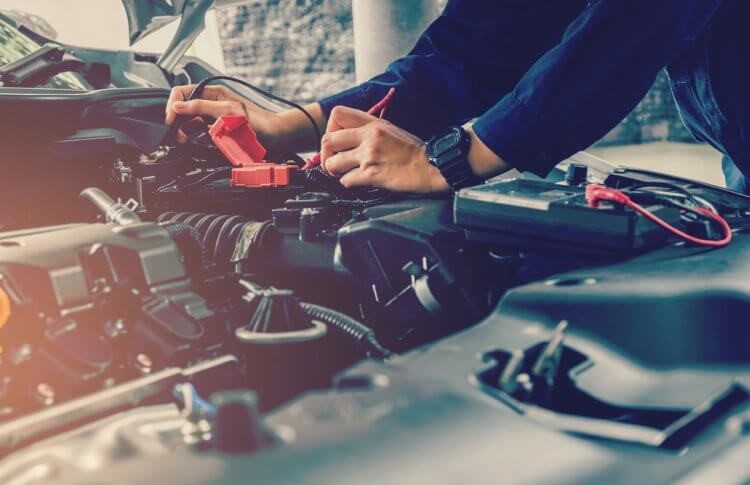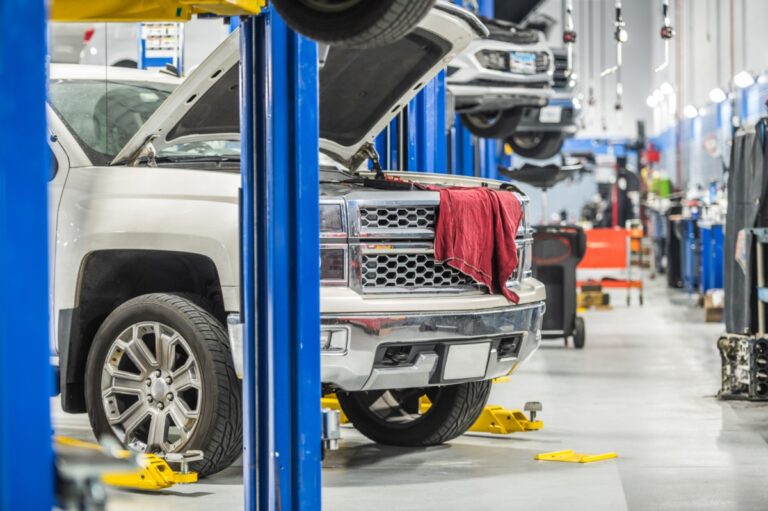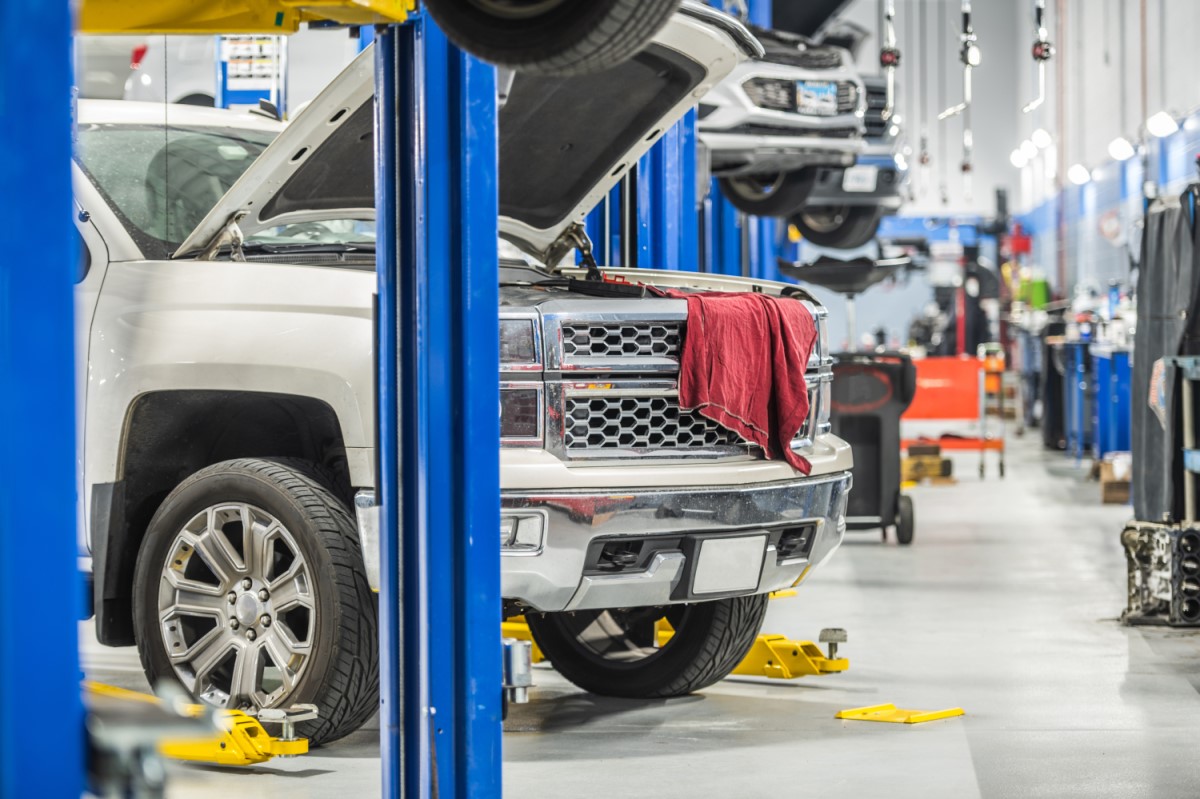Hi Ladies! Get to know your car, and do a little homework to get the best possible vehicle service. Here, The Car Husband shows you how to do that.
Caring for an automobile is a daunting task and can leave some women feeling they’re at the mercy of automotive repair shops.
Maybe you didn’t handle your family’s auto repair issues in the past, so you need some tips on how to safely navigate your way through the maze of auto repair shops, parts, and automotive terminology.
Women are the majority of consumers seeking auto repair services. “Women represent 50 percent of the repair market for automotive service shops, so it’s likely that the individual who takes primary responsibility for vehicle maintenance is female,” said Tony Molla, vice president of the Automotive Service Association, a trade association for automotive service owners and managers.
If you don’t know much about your vehicle, but want to avoid getting ripped off at the repair shop, you need to do your homework.

There are plenty of shops out there who take advantage of customers, especially women, because they assume women do not know about vehicles.
To complicate matters, today’s vehicles are more sophisticated with computerized modules and often inexplicable dashboard lights and codes. And certain repairs may cost more than in the past.
The price of automobile repairs could have significant impact on any household budget. According to a recent study from Ally Financial, many Americans could be at risk of a financial emergency from just a $500 car repair.
Data provided by the Federal Reserve indicated that 41 percent of American adults could not pay a $400 emergency expense without going into debt.
“Vehicles and their technology have changed tremendously over the years, and so has the way you service them,” said Jeff Cox, president of the Motorist Assurance Program of the Automotive Maintenance and Repair Association, which establishes service standards for the auto repair industry.
“Many of us are familiar with $25 oil changes, but with today’s engine design and the synthetic oil required, you might have an oil change that costs well over $70.”
Visiting a mechanic is like going to the doctor. You find yourself there when you are already in trouble and need help the most.
With two in three consumers saying they don’t trust automotive repair shops in general, one thing is for certain, the worst time to pick an automotive repair shop is when your car is already broken down and you’re rushed into making a decision.
Be a Savvy Consumer
Unfortunately, overcharging and taking advantage of customers unfamiliar with vehicles is a common issue in the auto repair world. If you don’t know what to expect, you can be a victim of poor service.
The Car Husband — along with Consumer Reports and others — offers suggestions on how to avoid being ripped off by an auto mechanic or repair shop.
Unless you’re an auto mechanic, dealing with a repair shop often requires a leap of faith. But if you pay attention to what your mechanic says (and does), you’ll find clues that could tell you whether you’re being bamboozled.
Here are some things mechanics may say when they’re planning to take you for a ride—and we don’t mean in your car:
• Beware if your mechanic’s idea of “scheduled maintenance” bears little resemblance to the recommendations in your owner’s manual. Some shops “build the ticket” (translation: pad the bill) by recommending extra and often unnecessary procedures, such as engine and transmission flushes, or by scheduling some tasks prematurely. Some hawk high-priced “generic” maintenance schedules that may omit procedures your car needs, and don’t follow the owner’s manual. Yes, read your owner’s manual it’s chocked full of essential information, and can save you money in the long run.
Be especially concerned if the shop makes every recommendation sound like an emergency.
• Suggest or perform unnecessary repairs or maintenance that do not match the scheduled maintenance recommended in your car’s owner’s manual.
• “We thought the fuel filter would fix the problem, but it looks like the fuel pump” Uh-oh. You may be dealing with a so-called parts changer, that is, a mechanic who’s literally rebuilding your car because he is incapable of diagnosing the problem. Make the mechanic justify the initial repair. Even if it was an honest misdiagnosis, the shop should refund the amount of the first repair or discount the next one. If the mechanic gets the diagnosis wrong again, stop replacing parts and replace the shop.
• Charge you inflated or excessive fees; use The Car Husband’s repair estimator to get an idea about what car repairs should cost.
• Replace parts that don’t need replacing or use poor-quality parts. Ask if they use parts that meet or exceed Original Equipment Manufacturer, aka OEM, specifications.

Know Your Car
How can you get up-to-speed so you can ask intelligent questions at the repair shop? One way is to educate yourself about your car.
A good start: Read “Girls Auto Clinic Glove Box Guide” by Patrice Banks, a mechanic and founder/owner of Girls Auto Clinic in Upper Darby, Pa. who wrote the book to help women learn how vehicles work and the systems that make a car run.
To empower yourself about your particular car, read your owner’s manual. Then, open the hood and get familiar with what’s there. Teach yourself to check fluid levels: oil, transmission fluid, power steering fluid and windshield washer fluid.
Ask The Right Car Repair Questions
An educated consumer cannot be taken advantage of.
Ask questions. If you don’t understand the answer or if the shop you are dealing with cannot explain everything to your satisfaction, thank them for their time and find another shop that can.
Describe the problem fully. Provide as much information as possible. Write down the symptoms and when they occur. If possible, talk directly to the mechanic who will be working on your car.
Don’t offer a diagnosis. Avoid expressing what you think might be causing the problem. You could be on the hook for any repairs the shop makes at your suggestion, even if they don’t solve the problem
Request a test drive. If the problem is occurring only when the car is moving, ask the mechanic to accompany you on a test drive.
Ask for evidence. If you’re not comfortable with the shops diagnosis, ask them to show you.
Worn brake pads or rusted exhaust pipes are easy to see. Don’t let the mechanic refuse your request by saying that his insurance company doesn’t allow customers into the work area. Insist on seeing the evidence anyway. If they refuse, it’s time to find another shop.
Get a second opinion, trust but verify. Call another shop or two and ask them to provide a quote for the same service
How can you make sure a shop uses quality parts?
Before approving any work, ask if the parts meet or exceed OEM specifications. If there is doubt, ask to see the packaging the part came in.
OEM parts exist because certain companies manufacture auto parts as subcontractors to vehicle manufacturers and use specifications of those manufacturers.
Inquire about the shop’s warranty policy on parts and service, too. Again, the key is to ask questions.
Find a Quality Car Repair Shop
Ask family and friends. “Word of mouth” is still the best source of finding a trusted auto repair shop. It’s also a good idea to visit the shop’s web site to learn more about who they are and the types of services they have to offer.
Go online and check the popular review sites to see what other people have said about the auto repair shop.
Before you visit a repair shop, watch this Car Care Council video.
Automotive Service Excellence (ASE), which qualifies automotive service technicians in a variety of different areas, brakes, steering, suspension, etc.
Look for things like certified technicians, a clean and professional facility, friendly service consultants who are able to explain what is being done to your vehicle and why you need that service, look for shop affiliations, the most professional facilities will make the effort to meet the requirements of an outside organization.
Check for a facility that participates in the Motorist Assurance Program. The Automotive Maintenance and Repair Association’s Motorist Assurance Program creates standards for the automotive repair industry. Ask your service provider if they participate in the program or look for a decal on the front door.
Find a AAA approved auto repair facility, there are more than 7,000 certified automotive repair professionals nationwide.
Make sure a written warranty is offered on all parts and labor. Work with a facility that keeps vehicle records. Make sure the facility offers transportation, this shows a commitment to customer service.
A reputable auto service provider won’t try to take advantage of customers and can make a living on dealing honestly with the public. A repeat loyal customer is the goal of any successful auto repair business owner.
Finding a Trusted Mechanic Video
For more tips like these, read our car repair blog.









